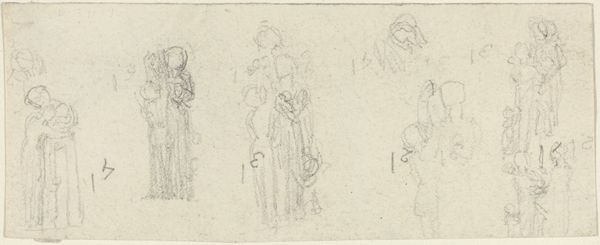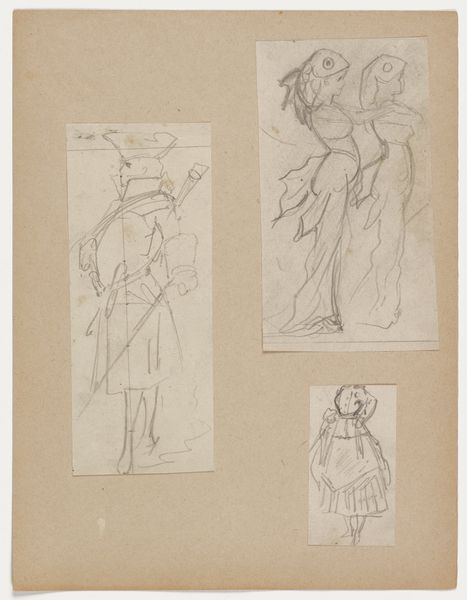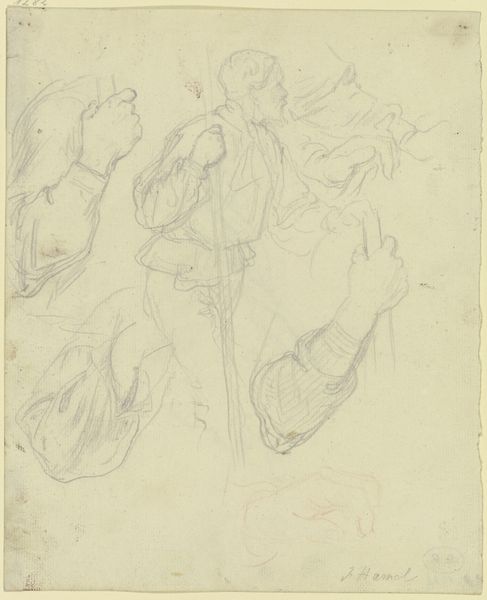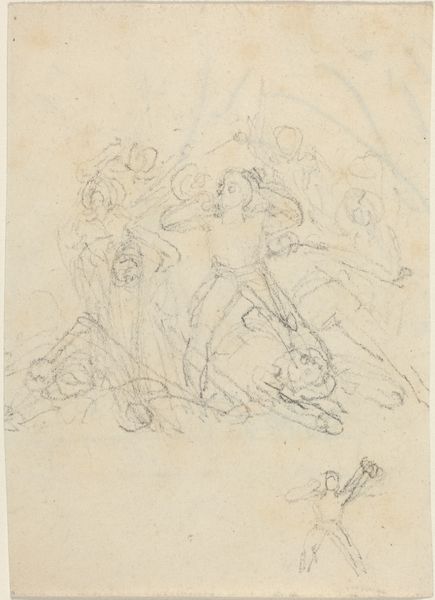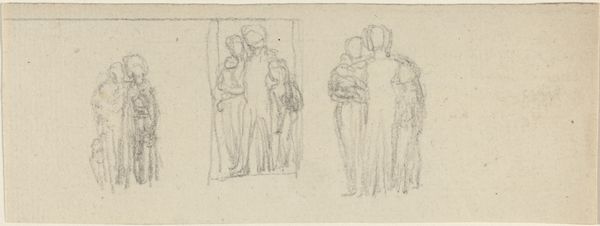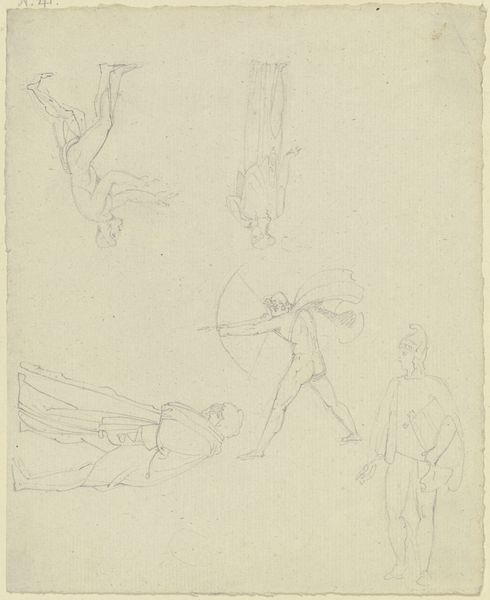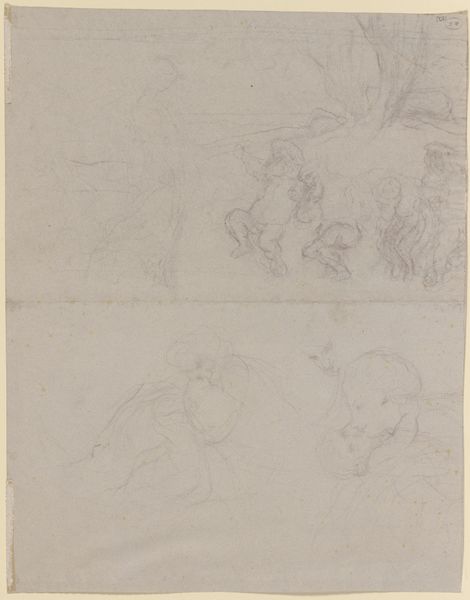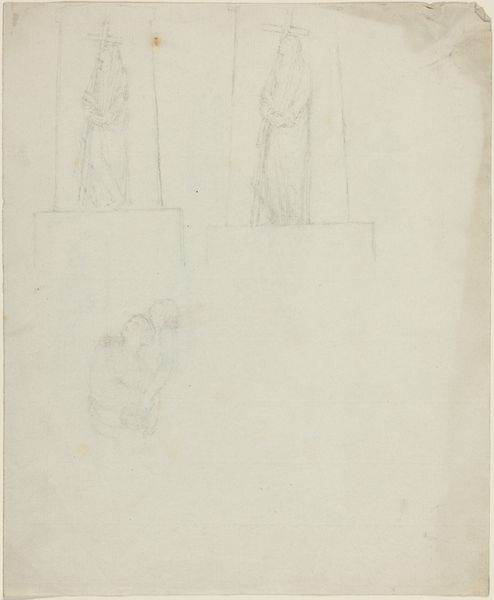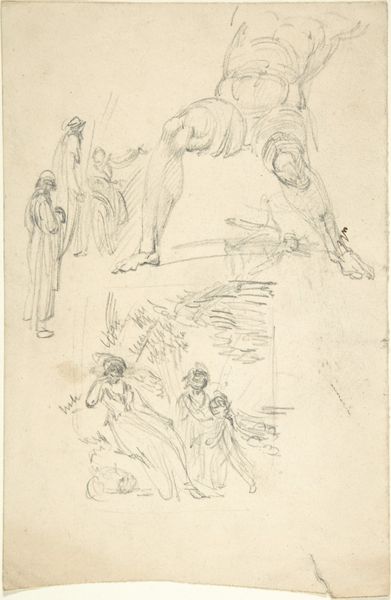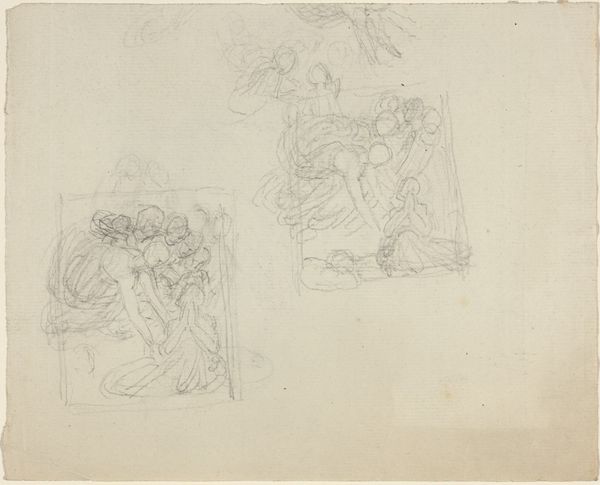![Sheet of Studies [recto and verso] by John Flaxman](/_next/image?url=https%3A%2F%2Fd2w8kbdekdi1gv.cloudfront.net%2FeyJidWNrZXQiOiAiYXJ0ZXJhLWltYWdlcy1idWNrZXQiLCAia2V5IjogImFydHdvcmtzLzYzM2NmMzc2LTU2MTQtNDc5MC05YTMxLWVjNjgzOTc5Zjg2Ny82MzNjZjM3Ni01NjE0LTQ3OTAtOWEzMS1lYzY4Mzk3OWY4NjdfZnVsbC5qcGciLCAiZWRpdHMiOiB7InJlc2l6ZSI6IHsid2lkdGgiOiAxOTIwLCAiaGVpZ2h0IjogMTkyMCwgImZpdCI6ICJpbnNpZGUifX19&w=3840&q=75)
drawing, pencil
#
drawing
#
figuration
#
pencil
#
academic-art
Dimensions: overall: 19.6 x 7.2 cm (7 11/16 x 2 13/16 in.)
Copyright: National Gallery of Art: CC0 1.0
Curator: This drawing, titled "Sheet of Studies [recto and verso]", is attributed to John Flaxman, and although undated, it provides insights into his artistic process. Editor: My immediate impression is one of fleeting impressions; it's raw, a little ghostly even. The pencil strokes are light, suggestive rather than definitive, evoking a sense of movement. Curator: Flaxman, known for his Neoclassical style, frequently used sketches like this to explore figuration. Each figure captures a particular mood, echoing contemporary interest in expressing complex human emotions within societal expectations of idealized representations of virtue. Editor: Looking closely, I'm drawn to the rhythmic qualities of the lines. Notice how Flaxman uses the repetition of curves to define form, particularly in the draping of the garments. It reminds us that drawing is, in essence, the creation of lines upon a surface, and he explores that in such an unpretentious manner. Curator: I’m interested in that unpretentiousness; I interpret that to suggest the casual attitudes that the artistic class could enjoy given the highly gendered structure of their art academy systems, even in preliminary sketches and life drawings. What power dynamics do you notice between the way certain figures stand and how they hold things like props or garments? Editor: A formal reading brings us to notice how the figures’ placement generates spatial relationships. The layout leads your eye around the page, suggesting he’s examining these studies, relating each part to a collective idea rather than seeing them independently. Curator: It’s a testament to the evolving role of drawing in artistic training and production— moving away from highly finished products to process-based explorations. It speaks to artistic expression that intersects history, gender, class, and visual culture. Editor: Exactly. Through that visual language, the sketches on this sheet gain a resonance beyond their modest means and allow for such diverse readings, which ultimately confirms their value and dynamism. Curator: Thank you for that analysis; I hadn't thought of how Flaxman’s approach invited more consideration of previously ignored socio-cultural practices. Editor: And I appreciate the chance to think through these implications—formal means and social context, two distinct lenses converging for enriched insight!
Comments
No comments
Be the first to comment and join the conversation on the ultimate creative platform.
